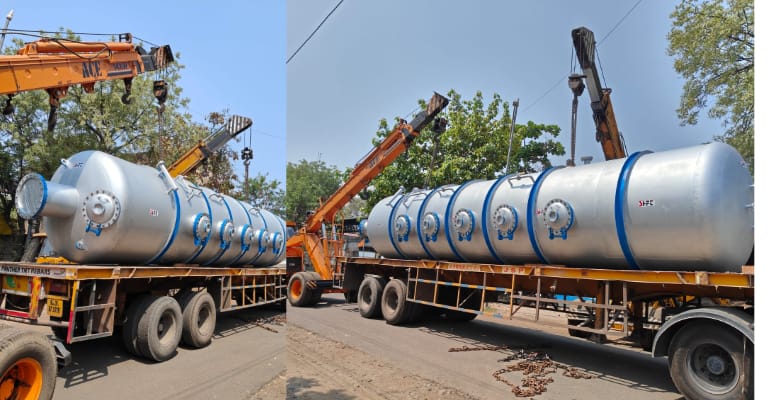Continuous Deodorization Process in vegetable oils refining plant :
The continuous deodorization process in edible oil refining is a crucial step to remove odoriferous compounds and improve the flavor and stability of the oil. Here's a detailed overview of the continuous deodorization process:
1. Preheating :
The refined oil, which has undergone processes like degumming, neutralization, and bleaching, is preheated to a specific temperature. This preheating step ensures uniform heating and efficient removal of volatile compounds during deodorization.
2. Steam Stripping :
The preheated oil is then introduced into a deodorizer vessel where steam is injected. The steam helps to strip off volatile compounds such as free fatty acids, aldehydes, ketones, and other odoriferous substances from the oil.
3. High Temperature and Vacuum :
The oil is subjected to high temperatures (typically between 180-260°C) under a vacuum to facilitate the removal of volatile compounds without causing thermal degradation of the oil. The vacuum lowers the boiling point of the volatile compounds, allowing them to evaporate more easily.
4. Distillation and Stripping :
The vapor phase containing the volatile compounds is carried away from the oil and condensed in a series of condensers. The condensed vapor is then separated from the oil through a stripping column or separator.
5. Cooling :
The deodorized oil is cooled down to reduce its temperature and stabilize it before further processing or packaging. Cooling also helps to condense any remaining traces of volatile compounds.
6. Filtration :
Optionally, the deodorized oil may undergo filtration to remove any fine particles or impurities that might affect its quality.
7. Quality Control
Throughout the deodorization process, quality parameters such as temperature, vacuum level, and oil quality are continuously monitored to ensure the production of high-quality, odor-free oil.
How deodorization of oil works :
Deodorization of oil is a process used to remove undesirable odors, flavors, and volatile compounds from oils, particularly edible oils like vegetable oils. Here's a simplified explanation of how it works:
The oil is heated under vacuum to a specific temperature, usually between 180-220°C (356-428°F), while being mixed with steam. This temperature is below the oil's smoke point to prevent degradation. The steam helps to volatilize and carry away the odoriferous compounds.Overall, deodorization helps to improve the sensory qualities of the oil, making it more suitable for consumption and various food applications.
- Great Technology
- Certified Engineers
- Delivery Ontime
- Best Branding



